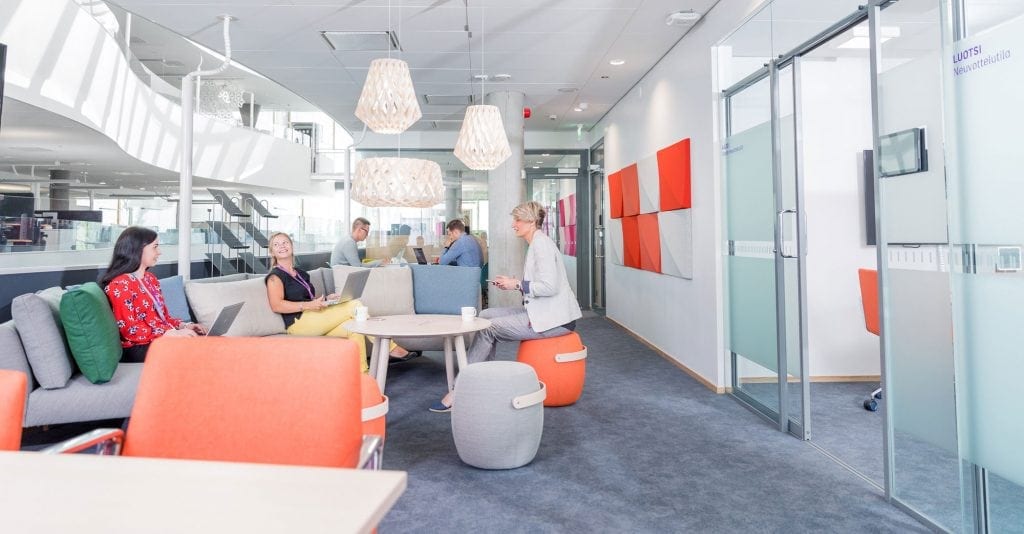
Activity-based environments require a new workplace culture
Activity-based environments require companies to adopt a completely new culture and ways of working and managing. As working environments develop, digital and social dimensions come together in physical places. Senate Properties promotes smarter government workplaces and comes up with new ideas and experiments on how we could work smarter.
What are activity-based environments?
Office jobs are no longer tied to a specific time, place or, most notably, enclosed office room. Work can be done everywhere you go – at home, on a train or in a coffee shop – and outside regular business hours.
Old inflexible office layouts do not support the modern way of working or the goals of working. This is where activity-based environments come in.
9 key elements of activity-based environments:
A workstation in an activity-based environment is a great choice especially for those whose job requires them to interact with their co-workers. For confidential tasks or tasks which require concentration, activity-based environments have breakout rooms and quiet rooms. For phone conversations, there are soundproof phone booths and breakout rooms.
In addition to bookable meeting rooms, there are group work rooms. In an activity-based environment, meetings can be arranged in no time, where necessary.
Different informal meeting points, such as cosy nooks with recliners, facilitate the free exchange of ideas, brainstorming and catching up. In an activity-based environment, break rooms and dining areas can be used by different departments and organisations.
An activity-based environment requires electric height-adjustable desks so that everyone can customise the height. The same naturally also applies to desk chairs.
Data are saved in the cloud and on network drives, so office spaces no longer require metres upon metres of shelf space to store paper copies and binders. Employees clear out their workstation when they are finished and carry their personal items with them in baskets or bags, for example.
Moving to a new type of office environment requires careful preparations, and managers must be able to listen to and alleviate employees’ worries. To make the transition easier, employees can be included in the project early on through different workshops, for example.
The construction process of a new working environment takes on average two years. To make the most of this time, companies should evolve the workplace culture and give employees the time to adopt new working methods so that they are ready to fully utilise the new office space when they move in.
Activity-based environments have no room for the old enclosed offices or old-fashioned management styles. Instead, managers work both in person and in spirit with the rest of the employees.
To facilitate co-working and virtual meetings, different spaces in the office also have mobile or wall-mounted screens.
Activity-based environments typically no longer have personal desks. This also means that the modern layout requires fewer square metres compared to traditional offices. In Finland, government offices have approximately 23 square metres per employee, but this number is constantly getting smaller. The goal of an activity-based layout is 18 square metres per person in remodelling and alteration projects, and 15 square meters in new builds, which translates into a significantly more efficient use of space and, consequently, cost savings. Moving to an activity-based environment does naturally require investments, but since the overall need for space is smaller, the total rent is often lower than before.
In other words, activity-based environments are not only suitable for new builds, but also for existing, older properties.
